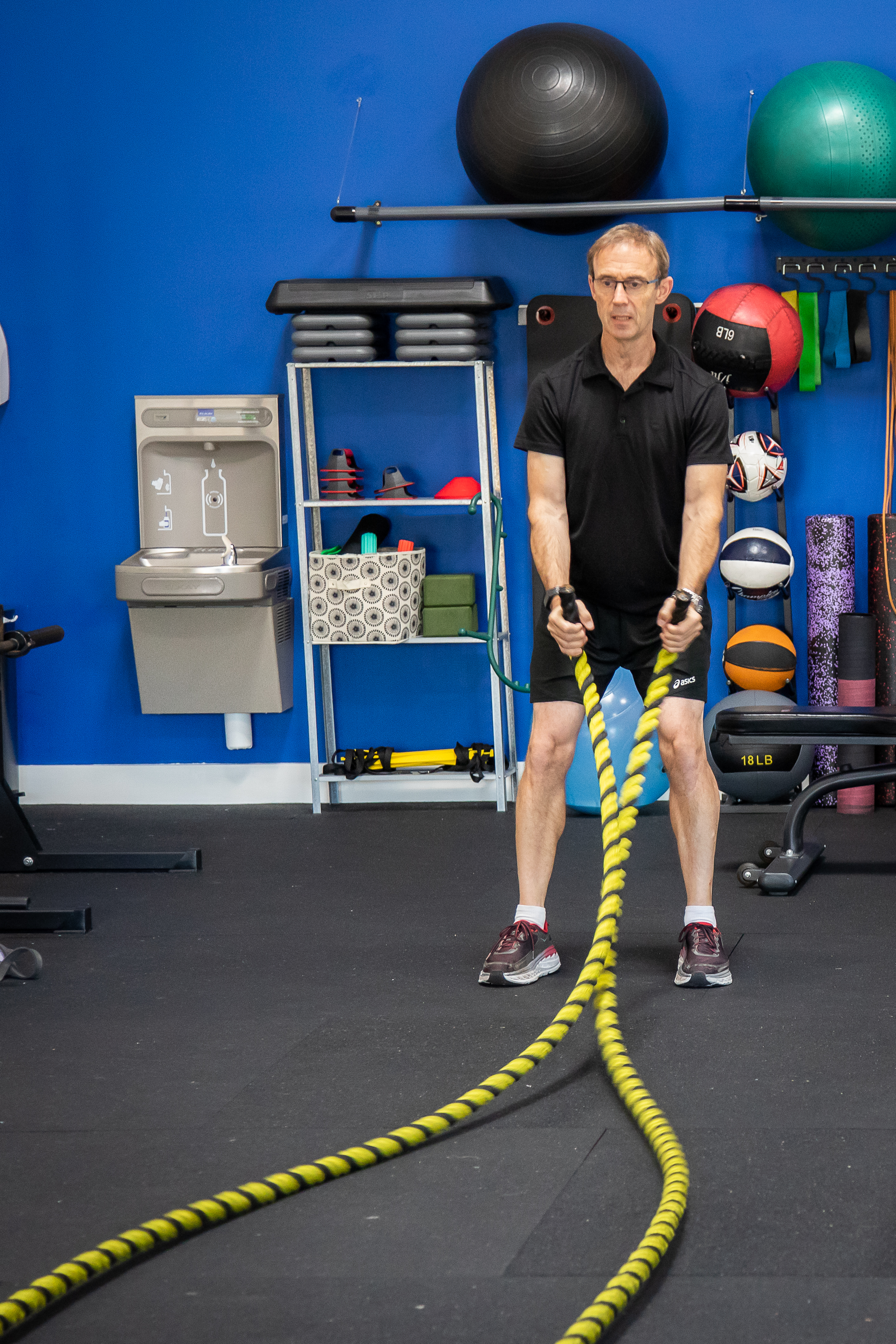Shedding a few pounds to prepare for a desired aesthetic appearance before a beach trip to the Amalfi coast in a few months, increasing lean muscle mass, or decreasing circulating cholesterol or insulin levels because the doctor said so, making a trip to the gym covers a lot of ground to enhance a human’s overall quality of life. One of the most prevalent goals we hear from our personal training clients just signing up for a fitness program at our gym is to live with less pain. Sharp spasms along the spine and hips when bending down to pick up objects from the ground, gingerly walking through the hallway after getting out of bed for those first few slow and tenders steps in the morning due to plantar fasciitis or heal pain, or simply struggling to open a jar of mayonnaise due to wrist and finger weakness can seem like quite the struggle. Pain presents itself in our lives more than we think.
A visit to the doctor or physical therapist regarding pain symptoms, we can expect to be asked, “How many minutes per week do you exercise?” Some of us can answer that question with a simple knee-jerk reaction, “three to four days per week.” However, an impressive amount of our society struggles to achieve one hundred and fifty, ninety, or even thirty minutes of organized weekly exercise. If we connect the dots of why specific individuals suffer from pain, more often than not, it’s due to a lack of adherence to exercise.
It goes without question that safe and effective exercise assists us in a myriad of improvements to our overall quality of life. Increased energy, increased strength, and decreased stress are just the tip of the iceberg. People who exercise regularly usually comment about how sore they are after a long bike ride through a scenic country road, hiking one of the beautiful bay area trails, or playing three hours of pickleball with their buddies. These active individuals might not comment about the pain they’re experiencing in their joints. If people don’t mention the discomfort of pain, this usually indicates that people aren’t dealing with debilitating symptoms of joint and bodily pain from lack of physical activity. A regularly active weekend warrior or recreational athlete doesn’t have time to be in pain. These active humans probably have an exercise routine forged throughout years of practice they adhere so they stay out of the doctors office and involved in the physical activities they love.
Extrapolating further on what a doctor or physical therapist usually prescribes to a patient reporting bodily pain, the dose of medicine prescribed might be some anti-inflammatories. However, any medical professional will recommend that compliance toward a routine exercise program will offer the monumental life-enhancing properties medication can’t provide. Whether it is heading to a local gym and exercising a particular body part three to four days a week, attending Yoga and Pilates classes every week, cycling at a spin class, or meeting with a personal trainer for weekly appointments, the effort toward adhering to a consistent exercise routine has significant potential to reduce pain-like symptoms throughout the body. Not only will conducting safe and effective exercise strengthen joints and muscles where arthritis, inflammation, and remnants of past injuries or surgeries presents themselves, but the adaptation from regular fitness training sessions increases aerobic capacity for muscles to endure longer periods of strenuous physical activity. A muscle with a high capacity toward fatiguing means areas of the body can perform their functions optimally. This means larger muscles responsible for significant compound movements throughout our everyday life operate at a higher capacity, and the likelihood of strain or injury decreases.
These adaptations from exercise don’t happen overnight. Research supports that significant advances in muscular performance take at least ninety days. We can use the most cutting-edge exercise equipment or follow the most innovative exercise routine in the world designed by Mark Walberg’s personal trainer. However, if such state-of-the-art resources aren’t utilized consistently, or an individual falls off from their exercise routine, you can expect to see little to no progress in the outcome of their fitness journey. Therefore, it’s important to note that compliance toward an exercise program sits at the top of the totem pole of a fitness improvement routine when it comes to the goal of pain reduction.
Reserve some time to map out weekly exercise plans. Decrease distractions, turn the phone off, and put yourself in an environment where you can perform safe and effective exercises. Complying with a regular exercise routine and dedicating time to ourselves on a consistent weekly basis is critical to decreasing pain symptoms and improving our overall health.
Sean McCawley, the founder and owner of Napa Tenacious Fitness in Napa, CA, welcomes questions and comments. Reach him at 707-287-2727, napatenacious@gmail.com, or visit the website napatenaciousfitness.com.

